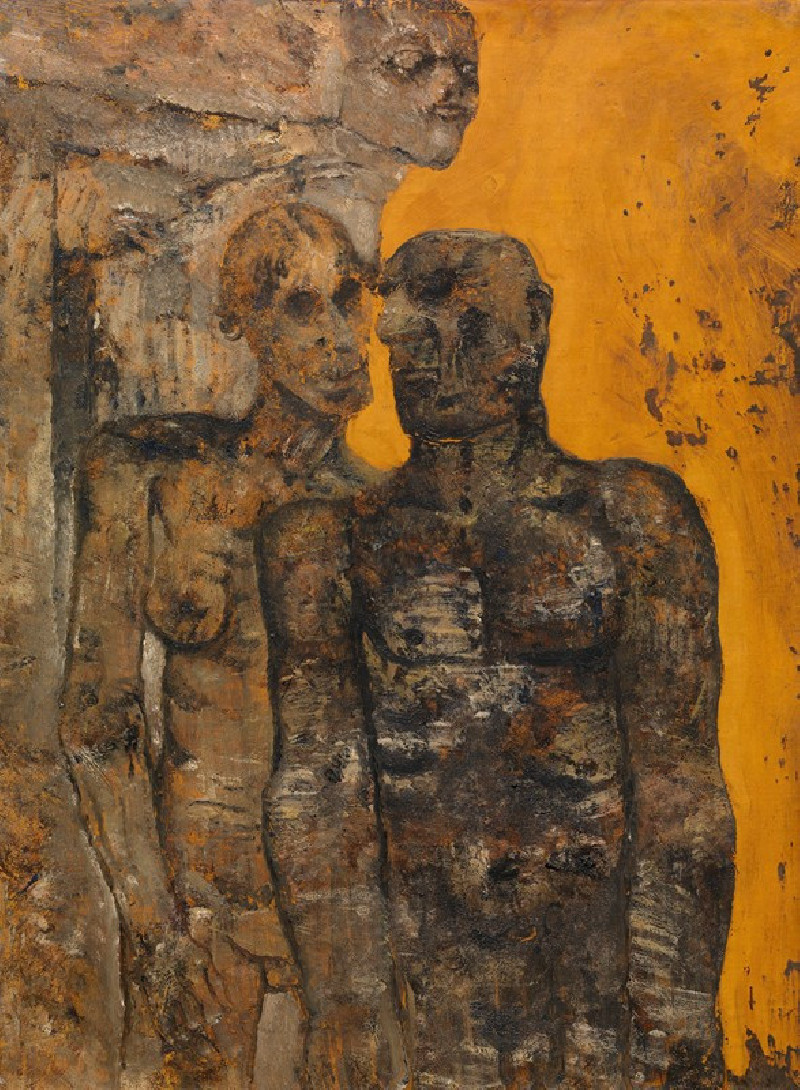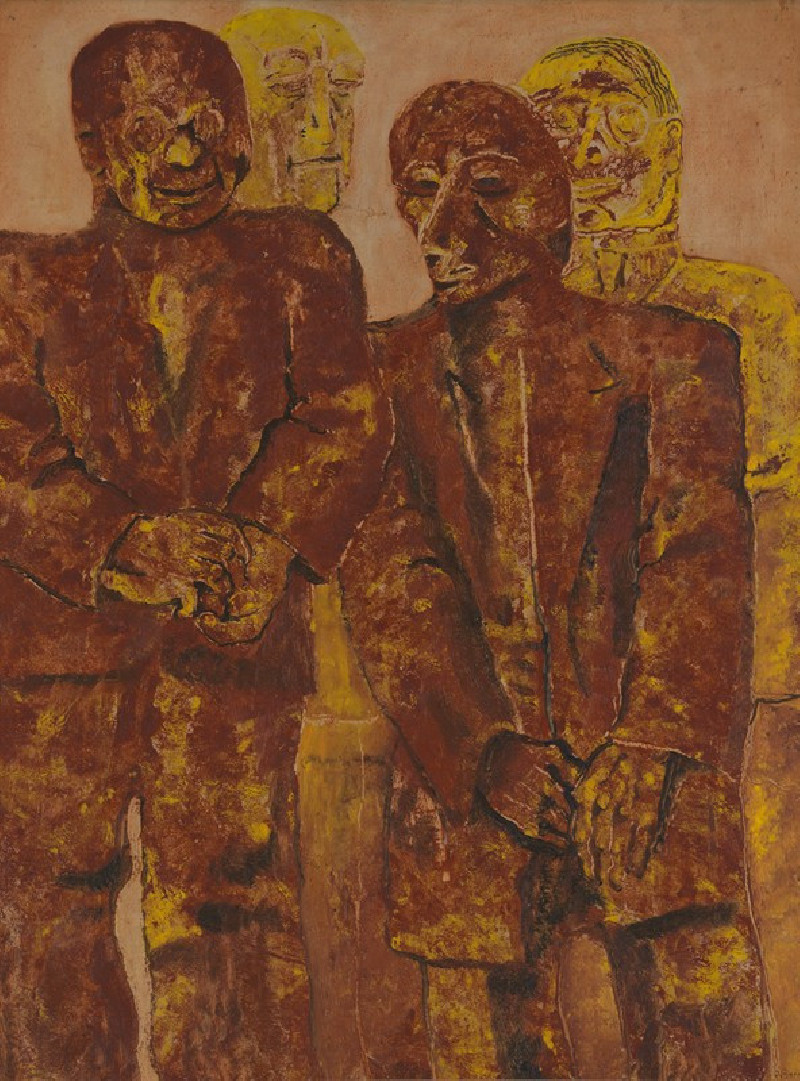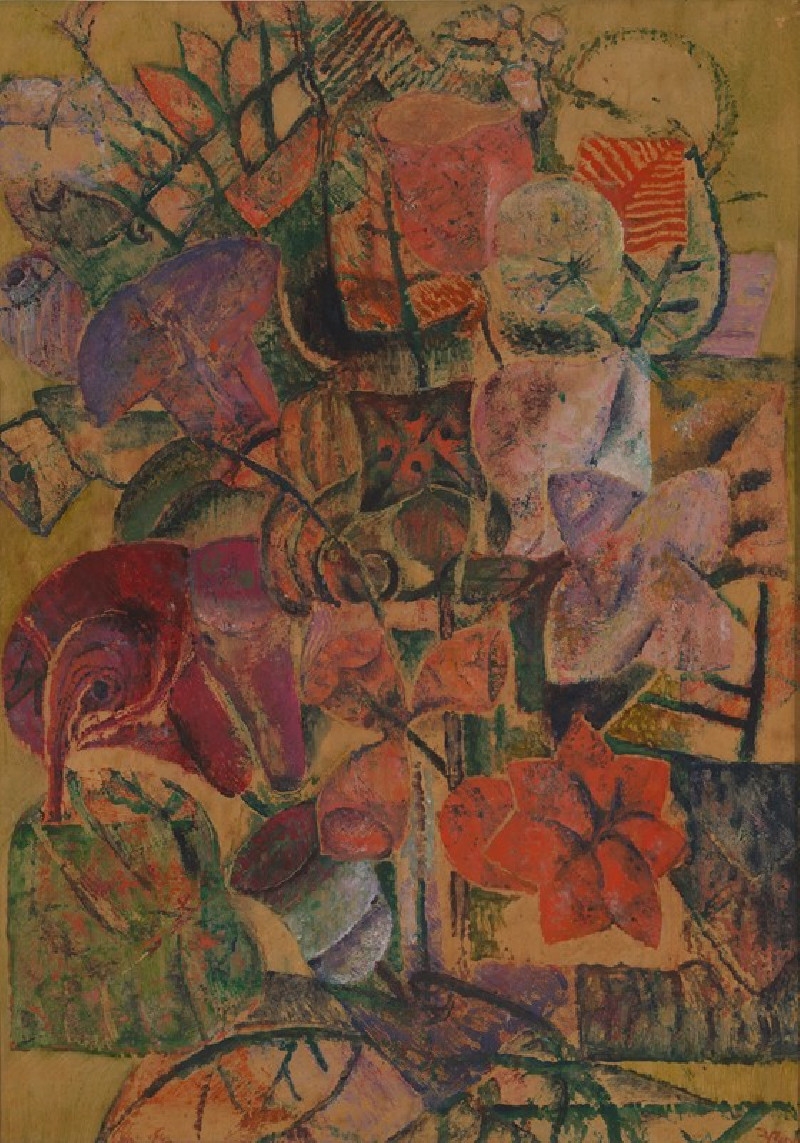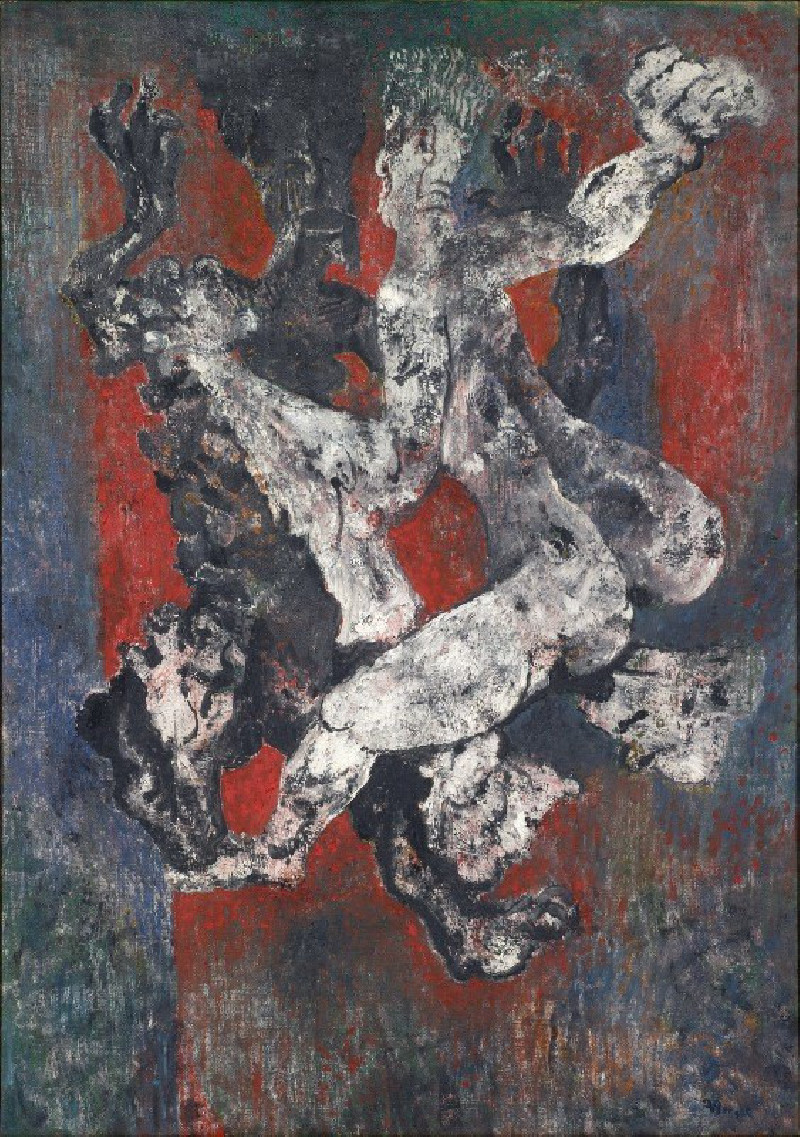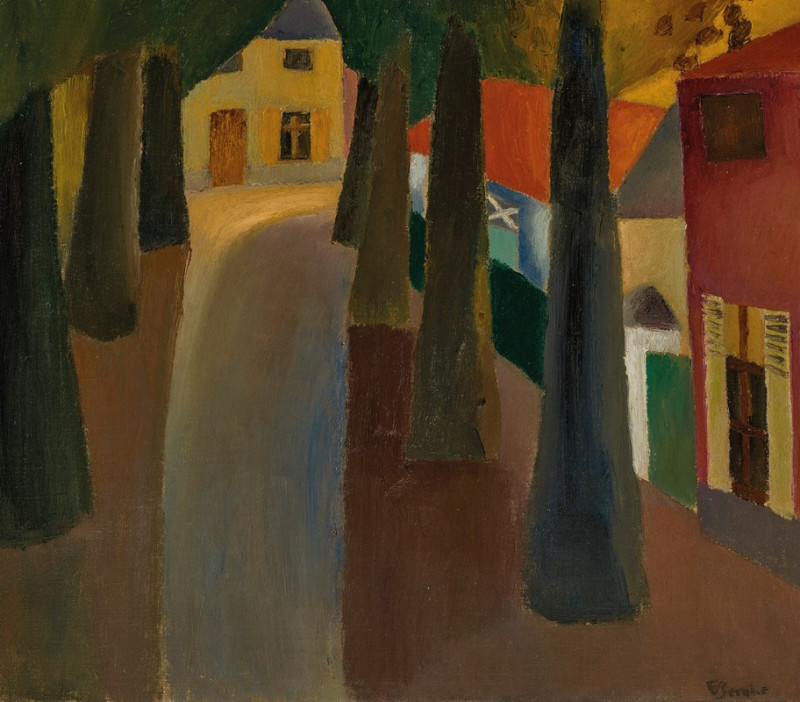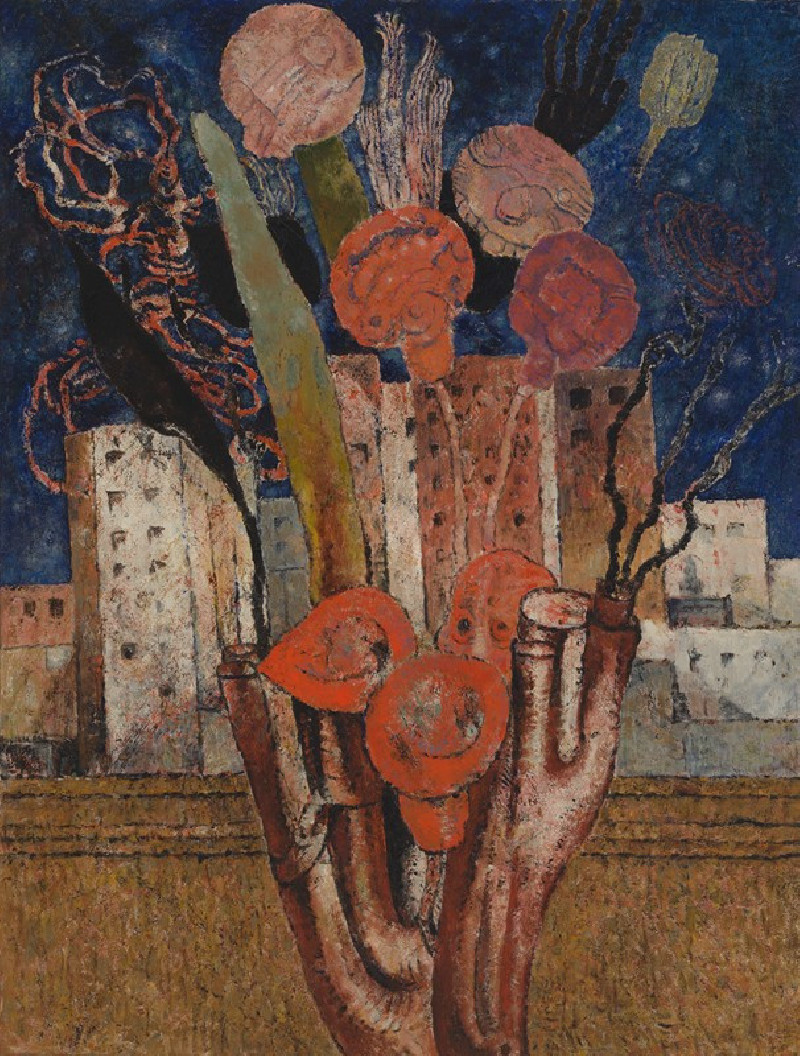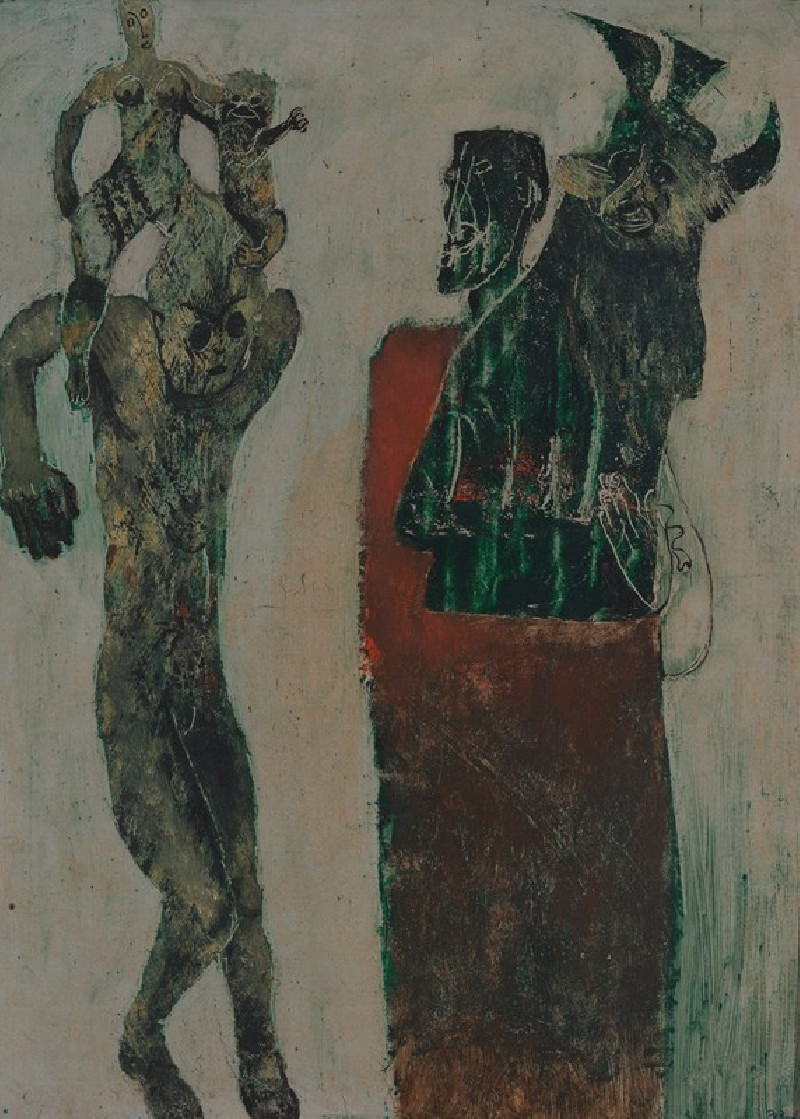Landschap (1919)
Technique: Giclée quality print
Recommended by our customers
More about this artwork
“Landschap,” painted by Belgian artist Frits van den Berghe in 1919, encapsulates the serene essence of rural life in a post-World War I context. This artwork, rich in texture and color, depicts a humble village scene set beneath a darkened, expansive sky that seems to brood over the landscape below.The painting showcases a series of rustic houses, their architecture simple yet profoundly indicative of the era and the rural Belgian setting. These structures, painted with a thick impasto technique, feature roofs in shades of red and dark browns, walls tinted with whites and creams, and chimneys that pierce the skyline. The use of light and shadow dramatically plays across the buildings' facades, suggesting the setting or rising of the sun.In the foreground, a figure alongside a horse and cart adds a human element to the scene, hinting at daily agricultural activities. Amidst the structures are small haystacks and patches of earth that suggest recent plowing, likely preparing the soil for future crops. This inclusion of agricultural elements serves as a vital aspect of the painting, reflecting the reliance on and the rhythms of nature that dictate rural life.Van den Berghe’s choice of a subdued, almost somber color palette might reflect the socio-economic conditions of the time, hinting at the recovery phase following the Great War. Yet, there is a certain peace and timeless quality to the scene, as it portrays a way of life fundamentally unchanged by external chaos.“Landschap” thus stands not only as a pictorial representation of a Flemish village but also as a reflection on resilience and the enduring rhythms of rural existence.


















